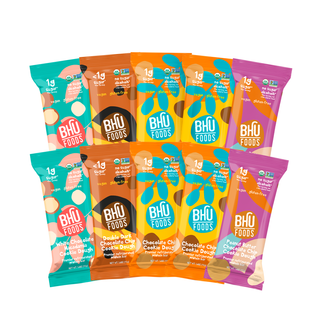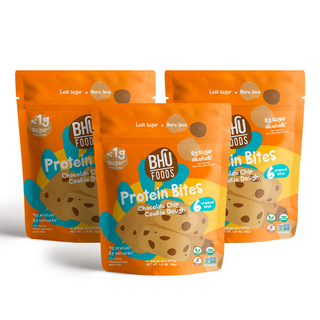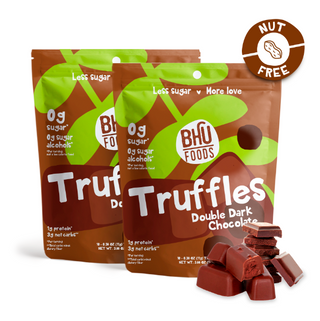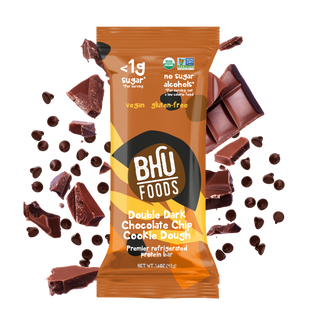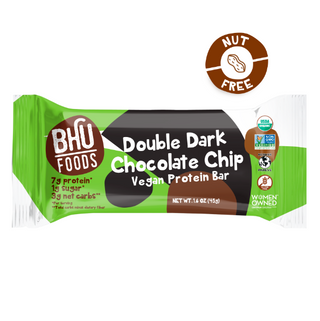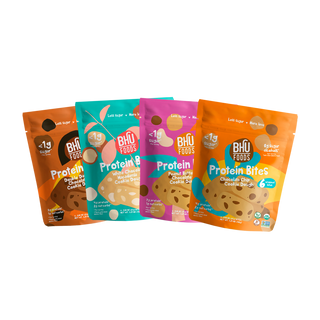
Easy Ways to Sneak More Green Vegetables into Your Diet
While a craving for a chocolate chip cookie is pretty common, a craving for a side of broccoli or a leafy green salad isn’t so much. Why? The body naturally craves sugar, processed snacks and comfort foods when stressed or hungry and when there’s a hormonal imbalance, such as an elevation of cortisol, “the flight or fight” hormone.
That’s why you may dig into a pint of ice cream after a breakup or when you’re worried about an upcoming presentation at work. Consider it “eating your feelings,” as opposed to eating simply due to hunger and increased appetite. Green veggies don’t get the same love, though. And since you’re less likely to crave them—or like them in general—it’s harder to monitor daily intake and make sure you’re getting enough.
Of course, you don’t need to eat every green vegetable—if you don’t like broccoli but do like Brussels sprouts, there’s no reason to force yourself to eat it just because it’s touted for its health benefits. It’s okay to stick with what you like, as long as you focus on the quantity and don’t get bored and burned out.
Plus, if you’re just not a veggie person, you can mask the flavor by sneaking them into other recipes you enjoy, where the flavor is less pronounced and you’ll get all the nutrition perks. Here are a few simple ways to get more green veggies in your diet so you stay healthy and strong—and you will likely enjoy eating them too!
Add Leafy Greens to a Smoothie
Spinach or kale may be tough to eat when steamed or braised as a side or used as a raw base for a salad. However, you can add leafy greens, like kale, spinach or Collard greens, as well as even chopped or frozen broccoli florets, to a smoothie that has bold flavors from fruit, chocolate and flavored protein powders that’ll hide that traditional “green vegetable” flavor.
Add spinach or kale to a creamy, thick protein smoothie that has plant-based chocolate protein powder, avocado, banana and blueberries, for example. The sweet aspects and chocolate taste will hide the flavor of the greens, so you won’t even notice you’re getting in their rich supply of iron, folate and fiber.
Sneak Zucchini into Breakfast Loaves and Muffins
Zucchini is a pretty bland green veggie, where the flavor isn’t so potent; however, it also isn’t super interesting or tasty, either. Yet, it has a nice dose of vitamins and minerals, fiber and a high water content, so it’s super good for you.
Bulk up the nutrition profile or banana or chocolate chip breakfast loaves and muffins, where you’ll be able to enjoy a more indulgent breakfast, snack or light dessert that packs more nutritional value per bite. You also add in carrots and sweet potatoes for some antioxidant power in the form of beta-carotene, which promotes heart, eye and skin health, too, and complements the zucchini well.
Puree Broccoli and Leafy Greens to Make Dips
Broccoli is a powerhouse for green vegetables in terms of nutrition, and it’s one of the most protein dense green vegetables. However, it might not be a favorite, go-to food, especially if it’s just simply roasted or steamed as it’ll lack in flavor.
You can hide broccoli in a delicious spread or dip by pairing it with a dairy-free yogurt, dairy-free cheese or nutritional yeast, as well as silky avocado. Another option is to make a dip with a leafy green too, like spinach or kale, which works just as well here.
Make Soup with a Variety of Green Vegetables
You can also make soup, both cold or warm, with broccoli, green beans, peas, celery, cucumber and leafy greens. Whip up a broccoli, spinach and dairy-free cheddar soup that’ll warm you up on a chilly evening or a light garden veggie soup with celery, green beans and broccoli. Play around with flavors!
A few more options include: thick, tomato-based, three-bean chili with greens or a white bean, kale and broccoli soup for chillier nights, as well as a cold, green gazpacho soup or a refreshing soup with pea, avocado and cucumber for those warmer months.
Make Brussels Sprouts and Kale Chips
Instead of greasy potato chips, make your own healthier chips at home that also feature green vegetables to help you meet your daily macro requirements while resembling a crunchy, tasty snack food.
Add plant-based nutritional yeast for that “cheese-like” texture, and have some fun with spices, like cayenne pepper, garlic or onion powder, or wasabi, or keep the chips simple by baking them with olive oil, black pepper and sea salt. The Brussels sprouts’ leaves can get nice and crispy, and kale is a classic go-to green vegetable for chips. You can also find pre-made kale chips at the grocery store, too, for when you’re on the go and don’t have time to make your own batch at home.




